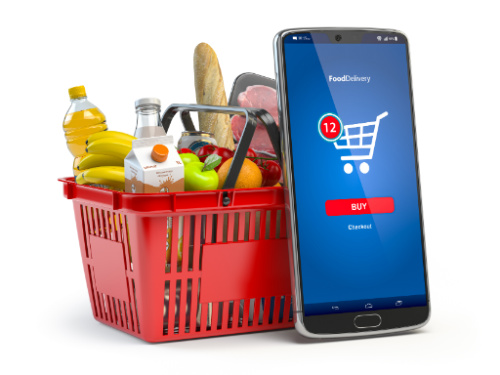By Jeff Domansky, Feb 16, 2021
We’ve got a roundup of expert perspectives on how payments changed in 2020 and what’s on the horizon for e-commerce and brick-and-mortar merchants. These insights will guide you through the choppy waters ahead and how you need to respond to the latest consumer shopping habits, and how you provide payment choices for your customers.
Shopping habits changed dramatically
I don’t know anybody whose shopping habits haven’t changed. Here’s a snapshot of what researchers say is important.

- Digital shopping is here to stay: “Physical distancing and stay-at-home orders have forced whole consumer segments to shop differently… 75% of consumers tried a new shopping behavior… (McKinsey & Company)
- Consumers are switching brands and unprecedented rates: “This general change in behavior has also been reflected in a shattering of brand loyalties, with 36% of consumers trying a new product brand and 25% incorporating a new private-label brand. Of consumers who have tried different brands, 73% intend to continue to incorporate the new brands into their routine.” (McKinsey & Company)
- “E-commerce has seen 10 years of growth in a matter of months – up 11% by April 2020 alone…169% is the expected future increase in e-commerce purchases from new or low-frequency users.” (Accenture)
Sudden impact for retailers

COVID forced many retailers to move quickly to omnichannel sales, adopt new delivery strategies, and rethink supply channels.
- “The next wave to look at is the fact that people are going to be at home much more going forward. Firstly, a lot of at-home working will continue, so there will still be a need to eat or consume more at home. Also, even if you are allowed to go out, restaurants are probably not the first place many people want to be.” (JP Morgan)
- “In the U.S., consumers spent $211.5 billion during the second quarter on e-commerce, up 31.8% quarter-over-quarter, according to the U.S. Census Bureau. The pandemic has pushed more shoppers online, with e-commerce now accounting for 16.1% of all U.S. sales, up from 11.8% in the first quarter, and this trend is likely to stick, even as brick-and-mortar stores open their doors again.” (JP Morgan)
- 59% of online shoppers say free delivery would improve their online shopping experience. (Shopify)
- “As economies reopen, 73% of consumers are still hesitant to resume regular activities outside the home. They are concerned about going to a hair salon, gym, or restaurant, but are especially worried about shared environments, such as public transportation, ride-sharing, air travel, and being in crowded spaces, such as attending large indoor or outdoor events.” (McKinsey & Company)
Consumers want contactless

US consumers changed their behavior in response to health concerns by adopting new contactless activities. According to McKinsey, “Technologies that enhance hygiene, particularly contactless activities such as food and grocery delivery and curbside pickup, are taking off. There is strong intent to continue contactless activities across the United States.”
- For restaurant delivery, 16% are using it more, 8% just started using it, and 42% intend to continue after COVID; grocery delivery (12% / 11% / 49%); meal-kit delivery (3% / 2% / 53%); restaurant, curbside pickup (14% / 15% / 39%); buy online, pickup in-store (15% / 9% / 60%); and store curbside pickup (McKinsey & Company)
- “In the US market alone, from March 2020 to April 2020, sellers taking 95% or more in card payments have grown from 8% to 31%. This is according to millions of transactions by nearly 70,000 Square sellers across the US accepting a minimum threshold of cash and card payments during this time period.” (Square/IHL)
- Merchants on Shopify accepting contactless payments grew by 122% during the pandemic (Shopify)
- “Contactless is now the method in which businesses provide their goods and services to customers by eliminating human contact, throughout the customer journey, from ordering to fulfillment. (Rakuten)
More businesses going to non-traditional lenders

For merchants, especially those just starting, the quality of the digital user experience is important. Traditional banks must compete with new challengers and neo-banks for business lending.
- 24% of merchants that applied for external financing stated that “My bank or financial institution doesn’t understand the needs of my business.” (Shopify)
- 48% of merchants say that a “good online banking or mobile app experience” is one of their top 3 most important features when considering a bank for their business, which was second only to “low banking fees.” (Shopify)
- 60% of merchants with a business tenure of 5 years or more are using online payment services or apps (eg, PayPal or Venmo) to pay their business-related expenses. (Shopify)
- 62% of casual sellers* say that a “good online banking or mobile app experience” is their most important feature when considering a bank for their business. (Shopify).
Work from home is here to stay

According to Accenture, 53% of people who never worked from home previously now plan to work from home more often in the future. The implications for merchants are clear – shopping is local, more mindful, and digital.
- Demand for local governments and local brands is growing: 56% said they shopped and neighborhood stores and bought more locally sourced products; after Covid ends, 79% said they would continue to shop local, and 84% said they would continue to buy more local products (Accenture)
- 35% of consumers said their income declined due to the outbreak; 54% are shopping more cost consciously and likely to continue doing so (Accenture)
Consumer habits are shifting quickly. Payments are evolving fast. What a business can control is how it responds and how quickly it innovates. We’ve learned in the past 10 months that it is possible to make 10 years of growth happen when it’s critical. Let’s keep that in mind as we face new challenges ahead.
You can read more about the state of payments in the FitSmallBusiness report The Last Click: State of Payments here. Tomorrow, we’ll share some of the excellent data visuals the report reveals.








LET’S CONNECT